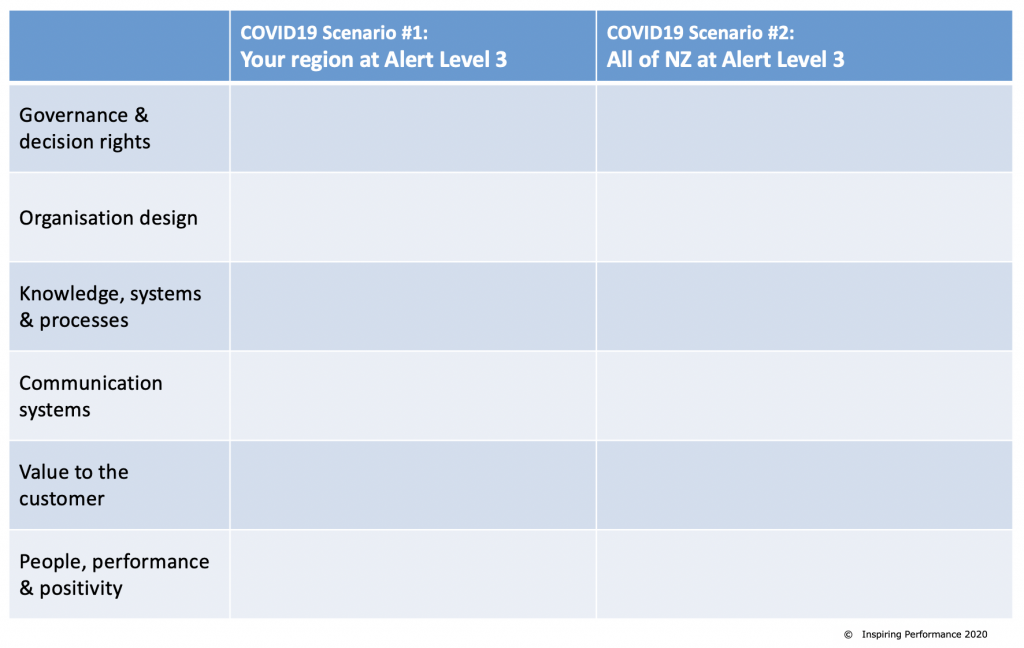Here we explain the mechanics and practice of the Operating Model within Peak Performance.
It was 4pm and the 12 people in the room, representing every team in the business, were amazed with the clarity and alignment of what they’d created during the day: Purpose, character, value-creating beliefs, goals, draft business model and the top challenges they’d need to overcome.
It was all captured on just a couple pages, and they could already see how the strategy gave guidance to the choices and opportunities in front of them. And then one of them inevitably said:
“This explains exactly what we stand for and where we’re going, but making it happen won’t be easy!”
In our experience working with organisations on performance improvement and strategy development, it’s the ‘doing’ that’s the tough part. The exciting part is coming up with the plan. The hard yards are in the implementation.
In this article we cover the ‘what’, ‘why’ and ‘how’ for implementing strategy and getting closer to peak performance via your target operating model. There’s also a template for scenario-planning.
First, let’s look at the differences between a few terms.
Definitions
Business Strategy: the means by which an organisation intends to meet its objectives.
Business Model: the methods by which an organisation attempts to create and capture value from its activities; as such, business models are primarily external facing.
Operating Model: how an organisation operates across organisation design, processes, physical infrastructure and information architecture to deliver on its strategy. Simply stated an operating model is how to implement strategy.Operating models are primarily internal facing.
Target Operating Model: a future-focused operating model developed to implement a change in strategy.
Organisation Design: the alignment of structure, systems, processes, measurement and people capacity and capability with the strategy of the business. The concept of organisation design is a subset of operating model.

An effective operating model integrates functions and aligns with results. In the absence of a widely understood operating model aligned to delivering outcomes, the risk is that functional silos and activities take precedence.
The concept of an operating model is important because it is the means to implement your business strategy and model. Here are the six parts of an operating model we help organisations create (for the successful delivery of their purpose and strategy).
Model: Aligning Purpose, Business Strategy and Operating Models for Peak Performance.

- Governance & decision rights: Who gets to decide and how? Delegations of responsibility and accountability for results.
- Organisation design: Ways and structure of working that are aligned with the purpose / values, and designed to deliver on your goals.
- Knowledge, systems & processes: Integrated systems for finance, quality, risk management, continuous improvement, sustainability and health and safety.
- Communication systems: Ways of communicating internally and externally that are networked, mobile, interactive and customer/stakeholder focused.
- Value to the customer: How value is delivered to and experienced by customers/consumers.
- People, performance & positivity: Recruitment & selection, induction, learning & development, performance progression, talent management, recognition & reward, succession and leaving.
It’s clear that structure should follow strategy. However, what seems far less applied is the need to align ALL aspects of the operating model to a new strategy and structure.
McKinsey research* suggests that only 30% of change programmes succeed. Many change programmes start with a restructure. This is understandable because there are well formulated processes for restructure, consultants are available to assist and an impression can be given of urgent action. However, many go wrong and it can take an organisation years to recover.
For example, a NZ public sector organisation had done an excellent job of developing an imaginative new strategy and had modelled a structure to implement it. Unfortunately, other aspects of the operating model were not aligned without urgent plans to resolve, for example, decision rights still related to the old structure.
By contrast, another NZ Crown agency developed a refreshed purpose, goals, business model and strategy AND a comprehensive plan for redeveloping all aspects of the operating model from widespread input. This enabled the strategy to be implemented with pace and momentum.
In our one day workshop – “Embedding Strategy For Peak Performance” – we help teams create their target operating model that aligns with their purpose and make their business strategy easier to action.
Scenario planning with your operating model
Confidence in uncertain times comes from knowing you’re prepared to respond to what might happen. Use this sheet to define what your operating model would need to be for you to maintain the delivery of sustainable customer value during these COVID19 examples. Download the sheet here.

Operating model transformation is hard.
It requires great leadership, tenacity and focus, and takes longer than an initial ‘restructure’ and burst of energy. The restructure element of the operating model can be likened to the tip of an iceberg; it’s the bit that looks prominent, but it’s the other operating model elements underwater that keep the whole thing on even keel.
Peak Performance theory suggests continuous operating model improvement, rather than change a given point of time.
The key questions you should ask yourself:
- How well aligned are the operating model elements to your organisation’s purpose, goal/s and business model?
- How well integrated are the elements of your operating model with each other?
- Is there a visual of how all these moving parts integrate?
- How effectively can staff engage with your operating model through interactive, networked, mobile communication tools and an effective knowledge management system?
So, if your organisation has made or intends to make significant strategic change, have you also developed a target operating model to enable the strategy to happen? Or contact us to hear how our 1-day workshop can kickstart your progress toward Peak Performance.
[1] McKinsey Research. (2011). How to Implement complex change at scale?
See all posts